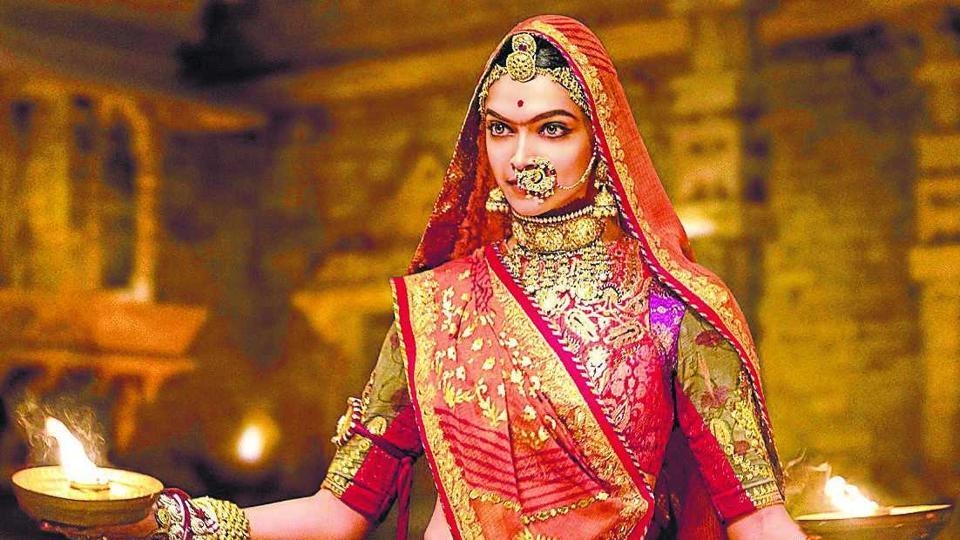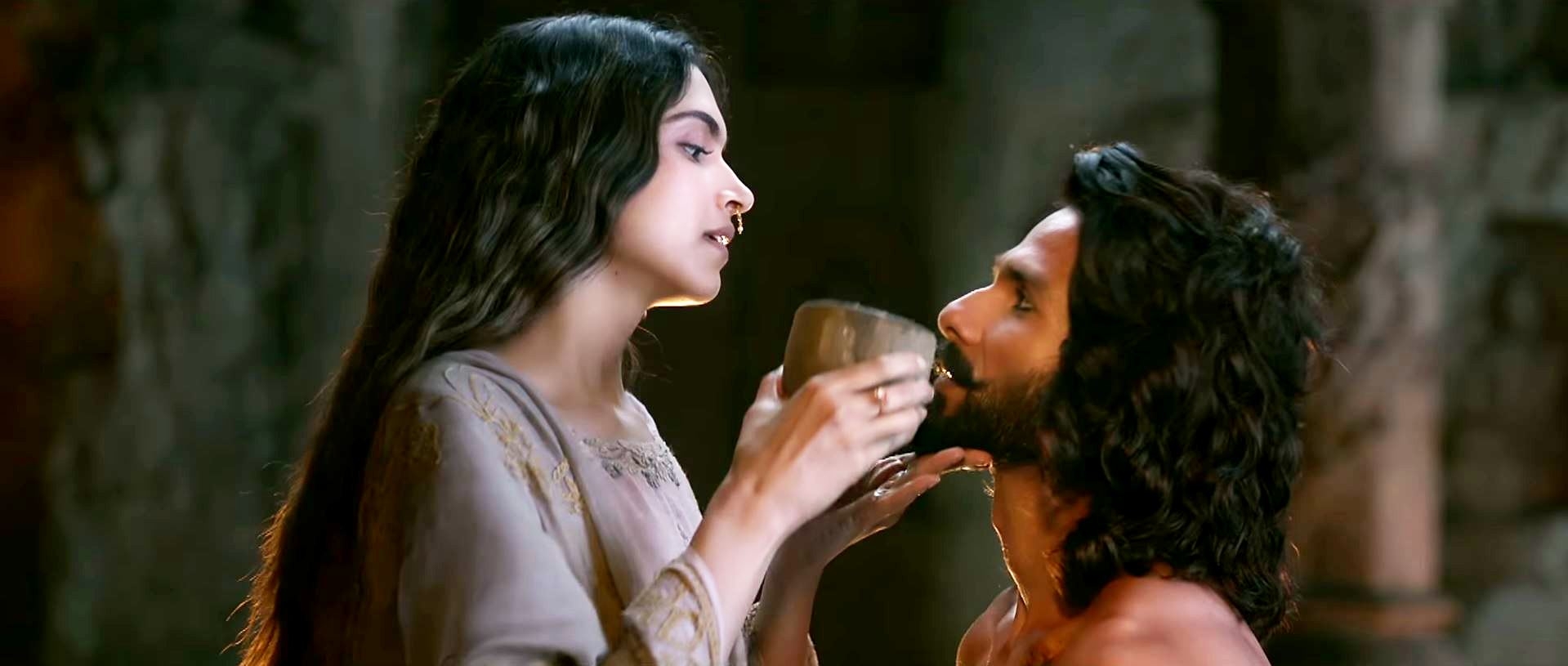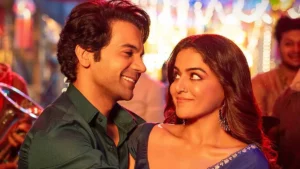
The Rajput community is known for their valour. They comprise of men and women who live by certain unbreakable principles that aren’t based on rationality per se. No wonder, their provinces don’t seem to win too many wars. At least, not the one in Sanjay Leela Bhansali’s Padmaavat. The Rajput ruler and his ilk appear lazy and rigid – not only in administrative policies but also their posture, expressions and gait. So much so that we tell ourselves that these folks deserve no victory.
Based on Malik Muhammad Jayasi’s poem ‘Padmavat’, this Bhansali costume drama – predictably – is a lot more about costumes, jewellery, makeup, VFX and prosthetics rather than actual conflicts. There are three principal characters who deck themselves up in clunky attire that make them visibly immobile køb viagra. When the performers and their faces display clear fatigue, one can’t ignore the paraphernalia – on and around them. Coming to the plot, Padmaavat is about a seemingly complacent Chittor province in 14th century Rajasthan. Their quixotic existence is challenged by an unannounced attack by the monstrous invader Alauddin Khilji (Ranveer Singh). Now the Rajput ruler (Shahid Kapoor) within his cosmos of rulebook theories can’t stand such unplanned strikes and the situation quickly turns ludicrous.
The invader in question, if we go by several historians, is not exactly one who crossed borders to invade ‘Hindustan’. His ancestors were of Turkic origin and had lived in Afghanistan before they could touch base in Delhi. Alauddin’s uncle Jalaluddin Khilji (Raza Murad in the film) founded the Khilji dynasty that ruled Delhi Sultanate for a good number of years. The point here is that Alauddin, besides being a Muslim, was born in India and his efforts in preventing the barbaric Mongols from entering India has been recorded by historians as an eventful triumph. Penning a negative lead for the first time, the writers of Padmaavat (Sanjay Leela Bhansali and Prakash Kapadia), however, decide to lend Khilji an all-black tone. And why not? When you are catering to a society that still breeds faulty and regressive notions about history (invasions, in particular), the texture ought to be ‘designed’ rather than human. Therefore, Bhansali’s Khilji ends up being a one-note caricature and, notably, a rebel without a cause. The man is clearly not in love. His motivation is an exaggerated version of a child’s desire for a candy that he hasn’t ever tasted. Or else, why would the most powerful ruler of the nation, at that point in history, station himself outside a distant palace for more than six months? There arises the question of the film’s core material – the poem. Is it too much to ask for a little logic if the writers are unable to establish the casualty of this conquest?
Somewhere midway we wake up to the way Bhansali functions. The camera (Sudeep Chatterjee), complete with the famous slow-motion shots and certain imposing angular ones, makes sure to cast a magnificent spell. Opulence, as mentioned earlier, is so in-your-face that we refuse to notice Padmavati’s tears behind her heavy facial jewellery. The original score and the musical numbers, besides the groovy Ghoomar, lack the usual Bhansali zing. It is further worrisome when most of these ditties act as speed-breakers in a narrative that is already excruciating with long-drawn, over-the-top sequences.
Historical references aside, Padmaavat eventually becomes so bizarrely ‘regular’ that it also feels like a morally problematic variation of Baahubali 2: The Conclusion. The latter, despite its share of discrepancies, is a wildly entertaining fare. A bona fide fiction feature, the film with its bits of orchestrated feminism – sort of – defines popular cinema of our times. Padmaavat, anyhow, is neither entertaining nor empowering. Of course, the film is representative of an era and we can’t pinpoint each character and their judgements that come straight out of certain cultural diktats. Still, Padmaavat makes us wonder if these plot points could have been glorified to a lesser extent.

Strangely enough, the film comes with a unanimous bunch of cardboard male characters. The main players – Singh and Kapoor – look so consumed by their method acting tactics that they seem to be performing to the mirror and not the camera. With long complex dialogues to utter in quick succession, we fear if these men would end up choking by the end of it. Kapoor, in particular, is so stiff and self-conscious that his Rajput act could easily rank amongst his worst. As for the fringe players, the utterly hammy Jim Sarbh makes Malik Kafur come across as an ineffective clown and a lot of it has to be attributed to the patchy characterization. The excommunicated priest (Aayam Mehta) is another Bhansali filler character in Padmaavat’s male ensemble – all of whom making it difficult for us take the proceedings seriously.
Thankfully, Deepika Padukone as Rani Padmavati is a picture of poise and is given fewer one-liners. The actor delivers a decent performance and we do feel like making an attempt to relate to her actions. The most empathetic act in Padmaavat comes, unexpectedly, from the luminous Aditi Rao Hydari who interprets the conscientious ‘Mallika-e-Jahaan’ Mehrunisa with great zest.
Having said that, the climactic sequence of Padmaavat supremely engaging and it is the Bhansali-ness that achieves this feat. The slow-motion shots and the editing style is so characteristic of his school of cinema; one can’t miss out on reminiscing the finale of Devdas. The film ends on quite a high note, albeit its problematic texture. Anyhow, the scheme here is such that we feel like celebrating the villain’s failure but not Padmavati’s endorsed idea of victory. This is all the more disappointing after the never-ending controversies surrounding the film. Did the political pressure around the film erode Bhansali’s actual vision? Thinking about it, Bhansali could have staged a dance-off between Padmavati and Mehrunisa even. Sigh! As for the severely underwhelming present version, let’s just call it the thesaurus ideal for the phrase ‘much ado about nothing’!
Rating: ★★
Images Courtesy: Bhansali Productions


Good review Tusshar. Not going to watch it…will spend my money on something better 🙂
Thanks Gargee. You may still give the film a shot. 🙂